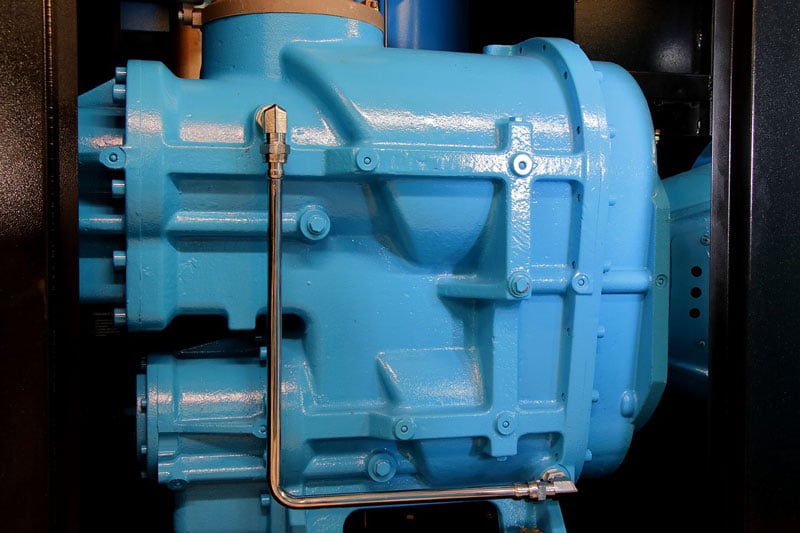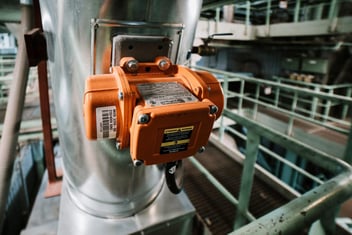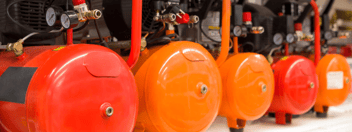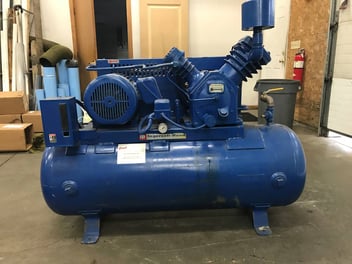3 Types of Air Compressors

For many industrial applications, air compressors are a necessity. But choosing the right air compressor for your facility is a little easier said than done. There are a number of air compressors on the market, all designed to do things a little differently. The first step to choosing the appropriate air compressor for your application is understanding the three main types of air compressors most used today. Here’s a comprehensive look at 3 types of air compressors, how they work, and what they’re used for.
01. Reciprocating Air Compressors
The most common air compressors are positive displacement machines. While there are a few different types of positive displacement air compressors, they all work in generally the same way. A cavity inside the machine draws in and stores air. Then, the working components of the air compressor slowly compress the air in that cavity, increasing air pressure and potential energy.
A reciprocating air compressor is one of the most popular types of positive displacement air compressors. Reciprocating air compressors use a piston with a cylinder to compress air in its confined space. As air volume is reduced, pressure increases.
Reciprocating air compressors are:
- Available as air or water cooled
- Available in both lubricated and non-lubricated configurations
- Available in a vast range of different pressures and capacities
Applications for reciprocating air compressors include:
- Smaller construction sites
- Workshops
- Applications where they are not used continuously
Reciprocating air compressors are not designed for continuous use. They are best suited to smaller work sites and applications that have longer cycle times.
02. Rotary Screw Air Compressors
Another popular type of air compressor is the rotary screw compressor. This is another positive displacement air compressor, but it compresses air a little differently than the reciprocating compressor. A rotary screw air compressor has two internal rotors that turn in opposite directions. As they turn, the air is trapped between the rotors, which builds up pressure within the compressor’s housing.
Rotary screw air compressors:
- Are available in many configurations. Spiral lobe oil flooded and single-stage helical are the most popular options.
- Are oil cooled with either water-cooled or air-cooled oil coolers.
- Designed for continuous use
- Range in power from 5hp to 350hp
Applications for rotary screw air compressors:
- Large manufacturing plants
- Large construction sites
- Any operation that needs a continuous supply of compressed air
Rotary screw air compressors are ideal for larger industrial applications because, unlike the reciprocating air compressor, they are designed for continuous use. They are not well suited to smaller applications as constant starting and stopping is damaging to the machine.
03. Centrifugal Air Compressor
The third type of air compressor is a centrifugal air compressor. This air compressor is a dynamic air compressor, rather than a positive displacement compressor. Centrifugal air compressors rely on the transfer of energy from a rotating impeller to the air.
An impeller is a disk with radial blades that spins forcefully inside the cylinder. As the impeller spins, air within the compressor gains velocity and is then pushed through a diffuser where it builds up pressure and is moved into a condenser. This method of compression means that centrifugal air compressors are most efficient when they are running at high speeds or near full capacity.
Centrifugal air compressors:
- Deliver a continuous flow of compressed air
- Are oil-free by design. The oil-lubricated gear is separated from the air by shaft seals and atmospheric vents.
- Are relatively low maintenance, as they do not require much contact between internal and rotating parts.
- Can deliver large amounts of compressed air with a relatively small machine
- Can reach around 1,000 hp
Applications for centrifugal air compressors include:
- Sensitive applications that require the highest standard of oil-free air
- Large industrial applications that require continuous large amounts of compressed air
Centrifugal air compressors deliver a continuous flow of air through the compressor. For this reason, they are best suited to applications that require a higher air capacity. As mentioned above, these compressors are more efficient at greater capacities, so it’s best to opt for a centrifugal air compressor when you have large, continuous air demands.
While these are the three most common types of air compressors, there are a number of compressor configurations within each of these types, all delivering different levels of air at varying capacities. If you’re new to air compressors, the TMI Compressed Air team is here to help. Our experts would be happy to match you with the right air compressor or compressed air system for your application, whether it’s new or used.
If you’re feeling confident about which type of air compressor is right for you, we’d suggest you move onto Selecting the Appropriate Air Compressor Control System. It’s the next step in choosing the right compressor for your facility.
Contact TMI Air Compressors


